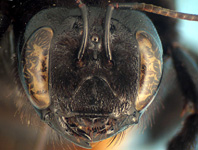Abstract
Most neogastropod families have a continuous record from the Cretaceous or Paleogene to the Recent. However, the fossil record also contains a number of obscure nominal families with unusual shell characters that are not adequately placed in the current classification. Some of these are traditionally regarded as valid, and some have been “lost” in synonymy. One such “lost” family is the Pyramimitridae, established by Cossmann in 1901 for the Eocene genus Pyramimitra, and currently included in the synonymy of Buccinidae. Examination of several species of inconspicuous, small turriform gastropods has revealed a radula type so far unknown in Neogastropoda, and their shell characters identify them as members of the "extinct" family Pyramimitridae. Neither the radular morphology nor the anatomy reveal the relationships of this enigmatic, “living fossil” family. Molecular data (12S, 16S, 28S, COI) confirm the recognition of Pyramimitridae as a distinct family, but no sister group was identified in the analysis. The family Pyramimitridae Cossmann, 1901, is thus restored as a valid family of Neogastropoda that includes the genera Pyramimitra Conrad, 1865, Endiatoma Cossmann, 1896, Vaughanites Woodring, 1928, Hortia Lozouet, 1999, and Teremitra new genus. Pyramimitrids occur in the Recent fauna at bathyal depths of the Indo-Pacific from Taiwan to Madagascar and New Zealand, with three genera and nine species (all but one new).

